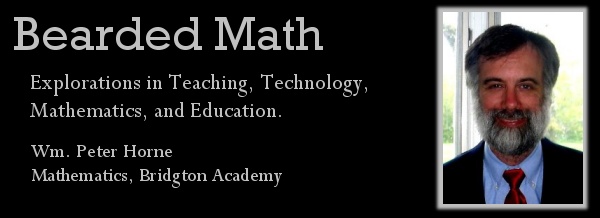Translate Language to Math Through Intermediate Steps
The first time students have formalized translation of language into mathematics is when they study word problems. However, I have seen too many texts and teachers make too large a jump when going through this process. Let’s look at a simple example to illustrate the point: The relationship between distance rate and time in a word problem. Often, a formula is stated such as:
“Distance, d, is the product of the average rate, r, and time, t, or d = r* t.”
As experienced math teachers, we may view this as somewhat trivial and obvious, but for the inexperienced students, there is often a bit of anxiety about what the definition means. With my students, I insert an intermediate step in translation, a term I call “Mathlish” Basically, this involves stating the formula in terms of words before presenting the formula in terms of variables:
“Distance, d, is the product of the average rate, r, and time, t .
This can be expressed as DISTANCE = RATE * TIME
Or d = r* t ”
This process can be extended to other formulaic problems, and can be used by students to clearly identify the variables in more complicated formulas.
Frame Math Vocabulary in Terms of Familiar Concepts
When I first started teaching, I often had students express confusion about properties such as associative or commutative properties or the intersection or union of sets. What found was that if I could frame the words in terms of familiar concepts, this confusion became almost nonexistent. For example, when working with the associative property, I had students think of 3 people that formed a team. No matter which two people I saw first, they were still part of the same team since they were associated with each other: (Bob + Kris) + Tom = Bob + (Kris + Tom), Likewise in math, it doesn’t matter which two terms are combined through addition first, since the terms are associated with each other:
(A + B) + C = A + (B + C). For the commutative property, I had students envision a commuter going from home to work and then from work to home. The same trip is made, but the direction is different. In math this becomes A + B = B + A. Having the familiar framework, outside of mathematics, made the mathematics more understandable.
Order of Operations is the Syntax of Math
Another point that is not stressed enough is how the order of operations relates directly to syntax in mathematics. I will often relate this to my students by writing on the board, “important understanding word is order to.” A few minutes of puzzlement go by, and I write, “Word order is important to understanding.” Just as placing words in unexpected places creates nonsense in English, so too does improper use of the order of operations. By framing the mathematical concept with a more familiar concept, students gain insight into the relevance and are more likely to pay attention. I also stress that math is a non-linear language, and the order operations occur in is not necessarily left to right. I point out the difference between English and Spanish. In English, we may refer to two pencils as: “The blue pencil and the red pencil.” In Spanish, the modifier occurs after the noun, (lapis), and the statement becomes: “El lapis azul y el lapis rojo.” In mathematics, we may see the same need to adjust our perception of order when we deal with the distributive law: Pencil*(Red + Blue) = Red Pencil + Blue Pencil. At this point, I introduce the relevant mathematics: A*(B + C) = AB + AC
These are just a few of the ways language and mathematics can be related to one another. The table below can be used to show how the development of language proficiency and mathematical proficiency can possibly be related.
Language | Mathematics |
| Recognition of spoken words | Recognition of quantities |
| Sight words | Math facts (Addition/Multiplication Tables) |
| Spelling/Phonetic Decoding | Elementary equations (4 + __ = 10) |
| Simple sentences | Linear algebraic equations |
| Complex sentences | Higher order algebraic equations |
| Essays | Proofs |
| Sentence Parsing | Order of Operations |
| Reading Comprehension | Analysis of Functions |
| Research Paper | Word Problems (Particularly Related Rates) |
| Translation between Languages | Numeric Word Problems |

1 comment:
Wow, I never quite thought of it that way. Brilliant!
Post a Comment